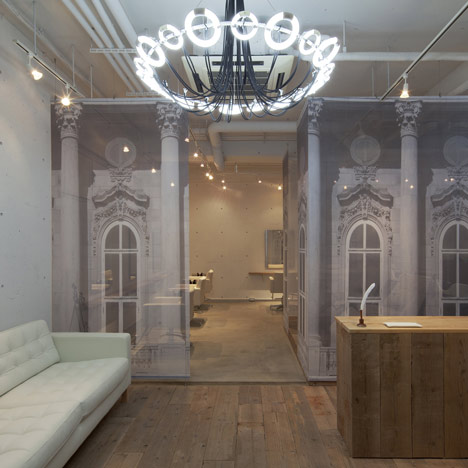
Salon by Tetsuya Ito of Takara Space Design
Ghostly images of building facades decorate hanging fabric screens in a beauty salon in Omiya, Japan.
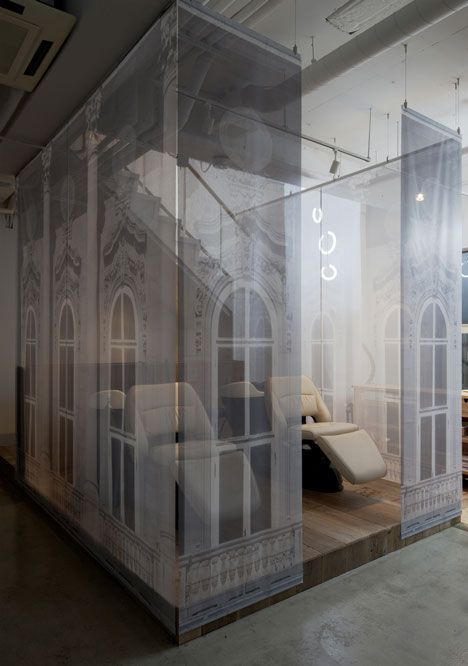
Completed by designer Tetsuya Ito of Tokyo firm Takara Space Design, the three-storey salon joins together two buildings – a former gallery and an old shoe shop.
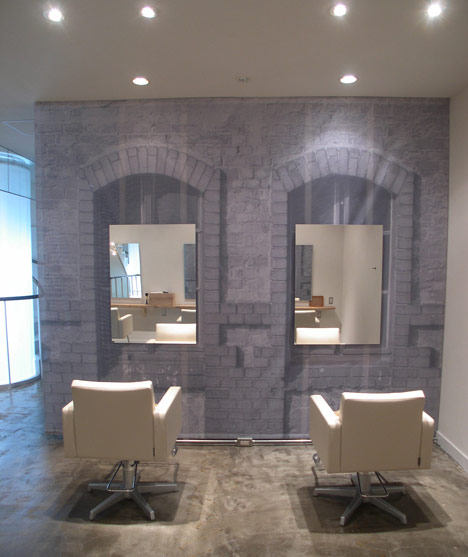
Mirrors hang across the printed windows of the black and white screens to create the illusion of real openings.
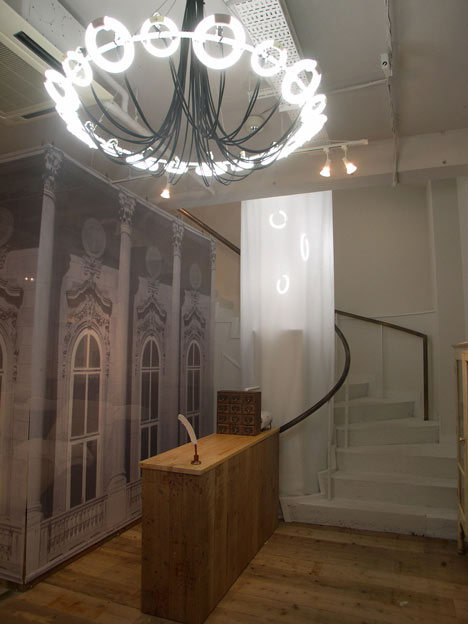
Chandeliers of fluorescent tube rings illuminate the reception, while additional rings glow behind a two-storey-high curtain to lead visitors up to first floor styling rooms.
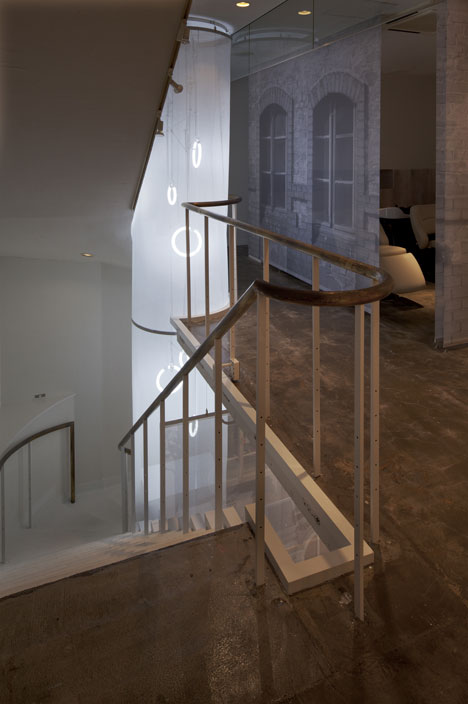
See more stories about salons and spas here, including one where customers sit at large wooden frames.
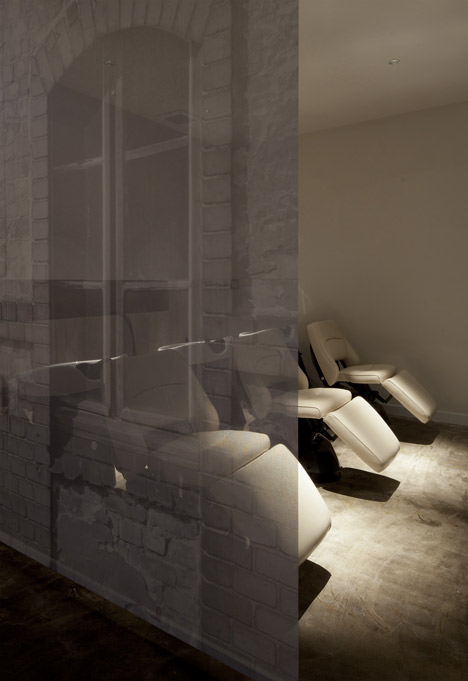
Photography is by Takara Belmont.
Here's some more text from Tetsuya Ito:
This is a project to open an additional salon for the young owner who is running local salon in the neighbourhood.
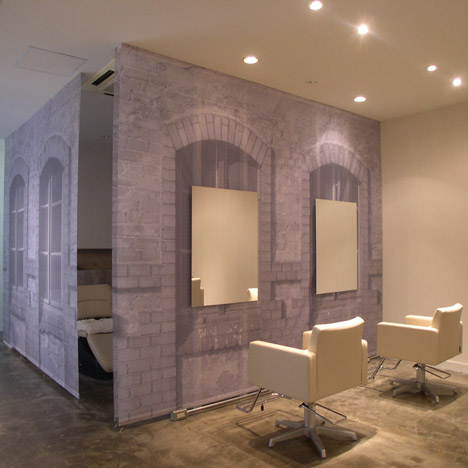
Location is in Omiya city which is a local city next to Tokyo.
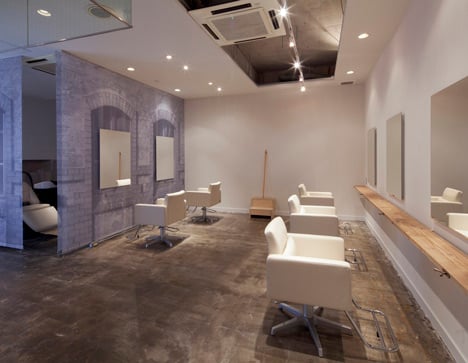
This project converts two separate existing buildings as one salon.
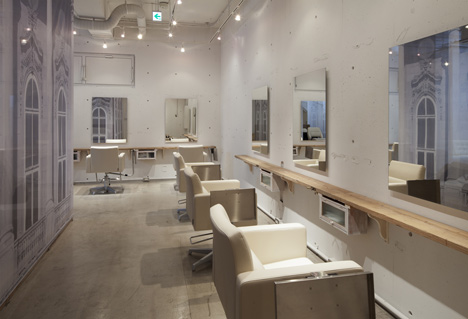
One is a three floor concrete gallery building converted to a beauty salon and office, another is flat wooden structure shoe store building to converted to manicure salon and personal styling-shampoo room for special guests.
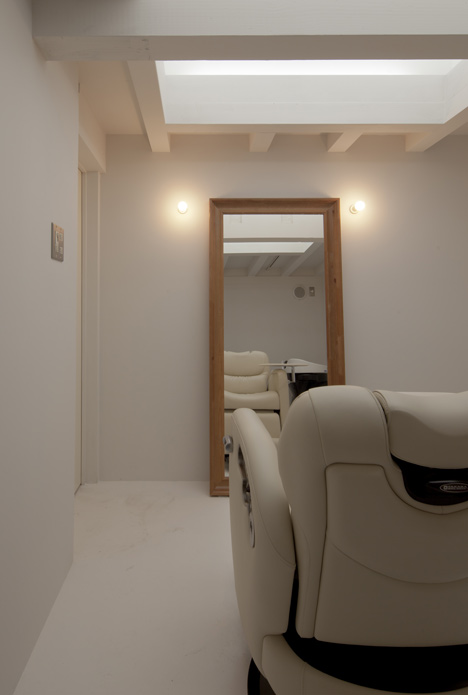
Layout of salon is set a shampoo area in the center of space and it divides a styling area and reception area to make access easily from each styling station.
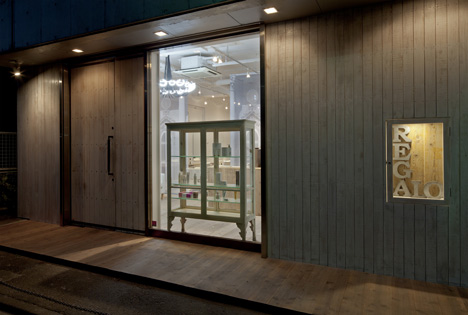
I used printed translucent construction cover screen as a divider and make this booth as a small misty building inside of another building. The reason I selected this material is this mesh structure can make translucent effect and at the same time for very tight budget.
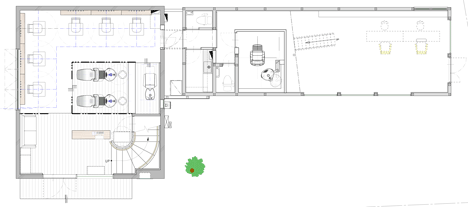
Click above for larger image
2nd floor is also beauty salon. I open up existing ceiling for cove lighting. 2 styling mirrors hanged on the graphic windows on the screen.
3rd floor is office.
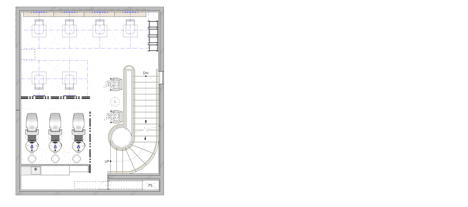
Click above for larger image
Another flat building is for manicure and pedicure salon and set personal styling shampoo room under the existing loft.
I made the chandelier by tying circle fluorescent lights and hanging lights inside the screen cylinder at the staircase to connect two separate areas as one design concept.